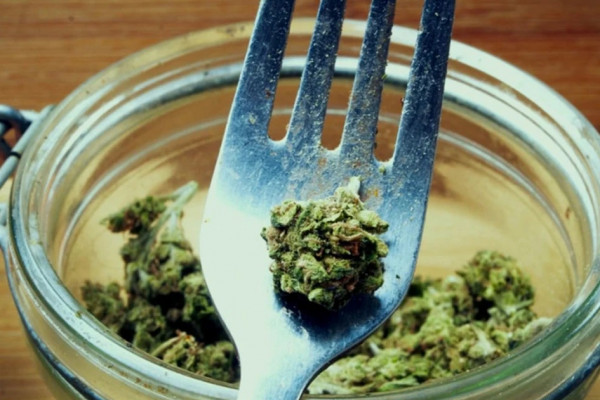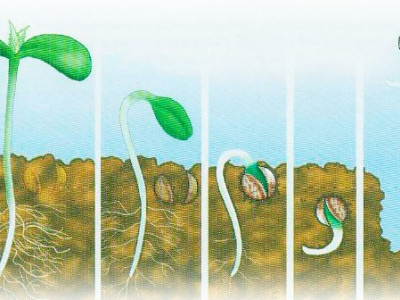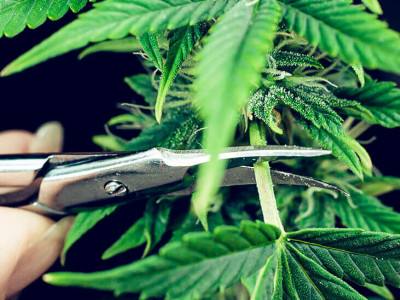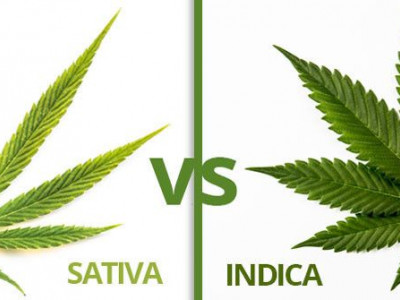0.00 грн.
CheckoutCan you eat marijuana?

Are you wondering if you can eat marijuana instead of just smoking it? This topic raises many questions, as this plant is usually associated with smoke and joints. But what if you add it to food? Is it safe, what effects can you get, and how does it work?
When we talk about eating marijuana, we mean products that contain hemp or its extracts. These can be so-called “edibles” - cookies, candies, chocolate, drinks, or even oil made with hemp. Such products usually contain THC (tetrahydrocannabinol) - the main psychoactive substance in marijuana, which is responsible for euphoria. There are also edible products with CBD (cannabidiol), which do not cause a psychoactive effect but may have a calming effect.
Unlike marijuana seeds, raw hemp leaves are not eaten as they are. For THC to become active, hemp must be heat-treated, for example, by making cannabidiol oil or tincture from it. Why? In its raw form, THC exists as THC-A, which has no effect on the body. Only after heating (the decarboxylation process) does it become active. So, if you are thinking of eating or smoking marijuana, edible products require special preparation.
Differences between smoking and eating marijuana
How does eating marijuana differ from smoking it? This is a key question, and the answer lies in how the body absorbs THC. Here are the main differences between smoking and eating marijuana:
Speed of effect - when smoked, THC enters the bloodstream through the lungs and takes effect almost instantly - within 5-10 minutes. Edible marijuana, on the other hand, works more slowly - THC passes through the digestive system and liver, so the effect takes 30 minutes to 2 hours to kick in.
Duration of effect: smoking produces a quick but shorter effect (2-4 hours). Edibles last longer, from 6 to 8 hours, which is ideal for those who want prolonged relaxation.
Intensity - when consumed, THC is converted in the liver to 11-hydroxy-THC, which has a stronger and longer-lasting effect. This can be both an advantage and a risk, as it is more difficult to predict the strength of the effect.
Dosage control: when smoking, it is easier to regulate the dose because the effect is felt immediately. With edibles, it is more difficult: if you eat too much, you can get too strong an effect.
These differences make edible marijuana a unique method of consumption, but they also add certain risks. We will discuss them further.
How the body absorbs THC when eating
The absorption of THC when consuming edible products is a whole process. When you eat marijuana, THC first enters the stomach, then the intestines, from where it is absorbed into the blood and passes through the liver. In the liver, THC is converted to 11-hydroxy-THC, which has a stronger effect on the brain. That is why edible marijuana can cause a more intense and longer-lasting effect than smoking. But there is a caveat: the speed of the effect depends on your metabolism, weight, stomach contents, and even the quality of the product. For example, if you eat a cannabis cookie on a full stomach, the effect may be delayed. This makes dosing more difficult than when smoking, so beginners should be especially careful.
Now to the main question: is it safe to consume marijuana in food? The answer depends on many factors. In countries where marijuana is legal (such as Canada or some US states), edible products are regulated, and the exact THC content is indicated on the packaging. This helps to control the dose and reduces risks.
- Here are some risks associated with consuming edible marijuana:
- Overdose. Due to the slow onset of action, people often eat more than they need, thinking that it is not working. This can lead to intense euphoria, anxiety, or even panic.
- Unpredictable effects. Homemade products may have uneven THC content, making it difficult to control.
Health effects. Excessive use can cause nausea, dizziness, or heart problems, especially in people with chronic illnesses.
If you are in a country where it is legal, always start with the minimum dose (5-10 mg of THC) and wait at least 2 hours to assess the effect. And never mix edible marijuana with alcohol or other substances!
How edible marijuana is prepared
In countries where it is permitted, the process usually involves several steps:
First, decarboxylation - dry cannabis buds are heated at 100-120°C for 30-40 minutes to activate the THC.
Next is extraction - the cannabis is mixed with fat (such as butter or coconut oil) to dissolve the THC, as it is fat-soluble.
And finally, the resulting cannabis oil is added to dishes - from cookies to sauces.
But again, in many countries, including Ukraine, the manufacture of such products may be illegal. We are not encouraging illegal activities, but simply explaining the process for those interested in the theory.
Is it worth trying
Whether to eat or smoke marijuana is a choice that depends on your goals and the laws of your country. Edible marijuana can be an interesting experience where it is legal, thanks to its long-lasting effects and variety of flavors. But without clear control over the dose and quality of the product, the risks outweigh the benefits.
Is it worth trying?
Whether to eat or smoke marijuana is a choice that depends on your goals and the laws of your country. Edible marijuana can be an interesting experience where it is legal, thanks to its long-lasting effects and variety of flavors. But without clear control over dosage and product quality, the risks outweigh the benefits. If you want to try something made from hemp, look for CBD products - they are legal in many countries and do not cause psychoactive effects.
Comments:0
Reviews:
Related articles
How to germinate cannabis seeds correctly
Proper germination of hemp seeds is the key to a rich harvest. Today, together with Coffeeshop® experts, we will figure out how to properly germinate cannabis seeds and achieve 100% germination...
Can you prune autoflowers?
Autoflowering cannabis strains are finicky guys, so trimming the leaves of autoflowers is a burning issue for any grower. The problem is that any intervention in the development of cannabis is perceived as stress, and the more unstable the variety it..
What is the difference between sativa and indica
Once you've discovered your talent for progressive horticulture, it's time to figure out what sativa and indica are - the differences in appearance and effects produced on the body. Coffeeshop® invites you to get acquainted with the features of each ..


